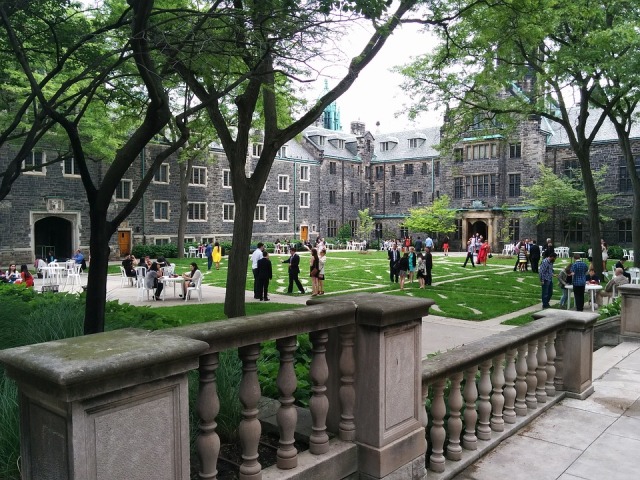 It seems that the delivery of [university] excellence in the Commonwealth lags behind. [Picture: Free great pictures.com]
It seems that the delivery of [university] excellence in the Commonwealth lags behind. [Picture: Free great pictures.com]
Education, and indeed higher education, is high on many national agendas. With an exponentially growing population, an increasingly globalised world, and technology innovations developing at breakneck speeds, a focus on education is frankly inevitable. But as tertiary education soars up the list of country priorities, it seems that the delivery of excellence in the Commonwealth lags behind. That could certainly be one conclusion from the Times Higher Education World University Rankings 2016–2017.
The World University Rankings represent one of the world’s definitive classifications of university education excellence. Published annually by the Times Higher Education supplement, it assesses ‘13 carefully calibrated performance indicators’ to draw conclusions about the quality of an institution. Times Higher Education. In the most recent edition, universities in only four Commonwealth countries were represented, and the names of these countries are unlikely to surprise anyone: the UK, Australia, Canada and Singapore. Considering that these countries are also the wealthiest in the Commonwealth in terms of gross domestic product (GDP) per capita, it is hardly surprising that their institutions of higher education (a notoriously elitist field) are the best in the family of nations. But other than wealth of the host country, what can we learn from the institutions considered in the top 100 in the world?
The Commonwealth country with the most universities is, perhaps not surprisingly, the UK; 12 of its institutions are considered among the best in the business. Australia is home to six institutions in the top 100, second in the Commonwealth to the UK. Canada, with the highest tertiary education completion rate in the Organisation for Economic Cooperation and Development (OECD) (53%, though much of this is vocational), is home to three top-ranking universities. Finally, Singapore has just two universities in the top 100, but with only a total of six local universities, this remains an impressive showing for the small, relatively young country.
With nearly one in four universities in the top 100 (23 total), according to this ranking, it might seem that the Commonwealth is doing relatively well. Looking back over the number of institutions in the top 100 since 2013, however, presents a varied picture (see Figure 1). A spike in institutions in 2015–2016 has since been mitigated by a return to less than 25 in the most recent study. A natural flux is expected for these types of ranking, but one would hope for a steady rise in numbers of top-ranking universities in the Commonwealth, rather than settle for consistency.

Figure 1. Number of top 100 universities in Commonwealth countries, 2013–2017
Important to note in addition to the top 100 universities is another ranking by the Times Higher Education supplement – the 150 under 50. This list ranks the top universities that have been established in the last 50 years, and here we see the Commonwealth do far better. Nearly half of all universities in this category (42%, or 63 of 150) are in Commonwealth countries. These include the aforementioned Australia, Canada, Singapore and UK, but also Malaysia, Pakistan, India, Cyprus and New Zealand. These countries, with their wide span of wealth, location and demographics, support a confidence in the possible improvement of Commonwealth universities in the future.
Examining the countries and universities that come top in the World University Rankings leaves one with a series of questions that the Commonwealth must address if it is to compete with non-Commonwealth countries in terms of tertiary education.
Is it just a wealth game? Certainly it would seem that money plays a huge role in establishing a distinguished university. The combined endowment of the top universities in the US, the dominating country of the rankings, totals well over £80 billion and the US economy is the largest in the world. But with up-and-coming universities in India and Pakistan, should this assumption change?
Is it a matter of volume? Perhaps the more universities a country has, the better it does in the World University Rankings. This would certainly seem plausible, considering that the US, with its many institutions, has the highest number of institutions in the top 100. But this begs the question – why are India, Argentina and Spain not faring better in the rankings, considering the number of institutions they house?
Is it a product of primary and secondary education? With Singapore’s consistently excellent performance in the OECD’s Programme on International Student Assessment (PISA) and the impressive reputation and rankings of some of the country’s largest institutions, it would be reasonable to conclude that primary and secondary education are important factors in determining university rankings. However, Canada is the second highest performer in the Commonwealth in the PISA, but is home to only three top 100 institutions.
So does this conclusion add up? These questions should form the basis for discussions as we seek to improve university education in the Commonwealth, thereby increasing the number of high-ranking, prestigious institutions in the family of nations. The Commonwealth is home to nearly half of the best young universities in the world and would do well to encourage them. How can the Commonwealth support new universities and improve the reputation of established institutions?
This will be vital as we seek to ensure the Commonwealth remains a relevant player in the field of education.
Anja Nielsen is the Programmes officer (Youth and education) with The Royal Commonwealth Society.



